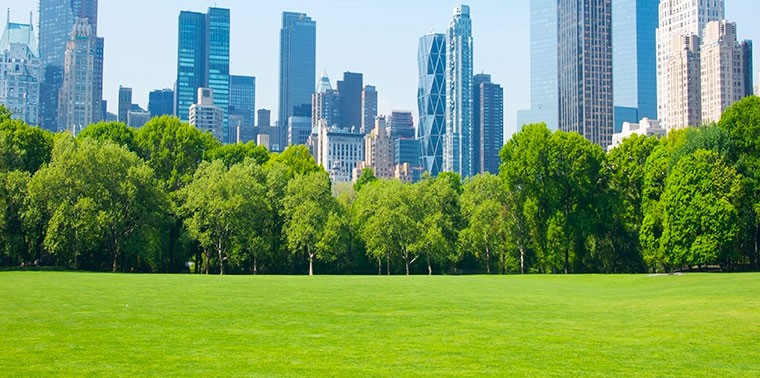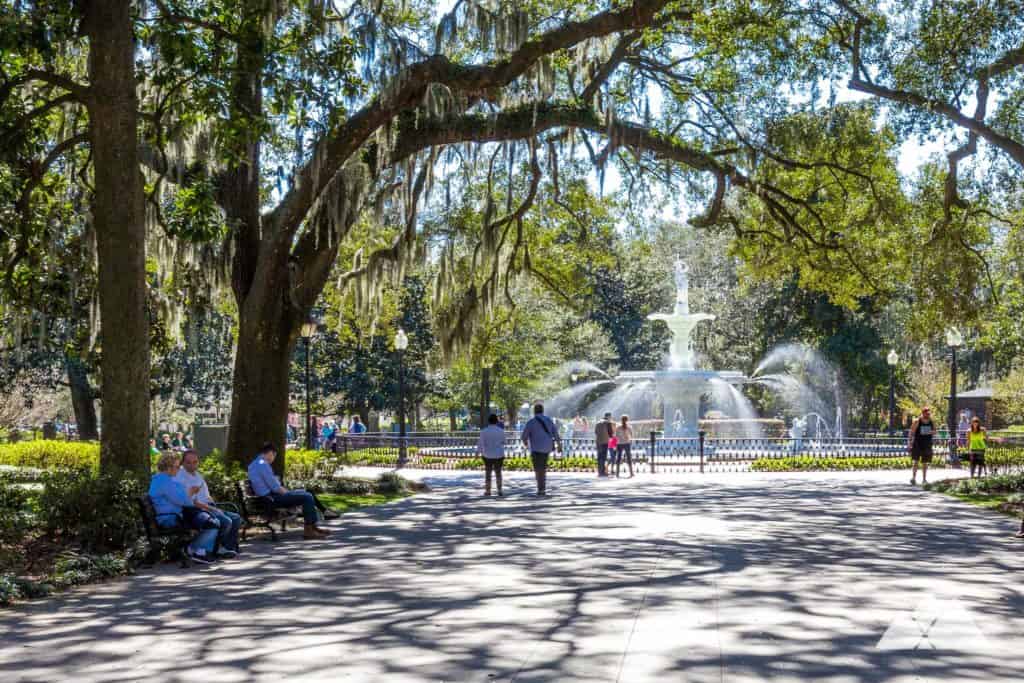Take a walk through your local park. If it’s well-kept, you’ll find yourself appreciating what it has to offer; if it’s poorly maintained, you might be left longing for improvements. In either case, you will get a sense of the importance of green spaces. Their presence gives a wide variety of benefits, while their absence leaves something missing. Here’s a look at green spaces and all the perks they offer.
What Are Green Spaces?
Green spaces are areas of nature within urban landscapes. The EPA defines green space as “land that is partly or completely covered with grass, trees, shrubs, or other vegetation.” The concept encompasses a wide range of places that bring varying degrees of nature to cities. Green space examples include:

- Parks
- Community gardens
- Cemeteries
- Higher education campuses
- Green roofs
- Common land
- Woods
- Green belts
- Nature reserves
- Botanical gardens
- Public squares
The Benefits of Green Spaces
Environmental Benefits
Green spaces have a wide variety of positive environmental impacts. They provide wildlife habitat, promote urban biodiversity, and improve air and water quality by reducing pollutants. In addition, the shade and cooling offered by green spaces has been shown to mitigate urban heat island effects. This leads to better energy efficiency and conservation, as demonstrated by a decreased need for air conditioning.
The cooling effect of urban green space can be crucial during heatwaves, offering vital relief and support. Green spaces can also mitigate the effects of other extreme weather events, such as heavy rain and flooding. Plants and soil provide places for water drainage and prevent or reduce flooding in urban areas.
Botanical Garden in Bronx, NY, photo courtesy Escape Brooklyn
Health Benefits
Green spaces also promote physical and mental health. They reduce the risk of non-communicable diseases like cancer and cardiovascular disease by addressing risk factors like pollutants and inactivity. By providing opportunities for physical activity, green spaces encourage healthier lifestyles and promote overall wellness. Green spaces in areas accessible to marginalized and socioeconomically disadvantaged groups can have even more focused impact, and can help to combat health inequities.
Furthermore, green spaces promote peace and relaxation by reducing stress and anxiety. They also support social well-being by providing a place for community interaction. Even small swatches of nature within urban landscapes can have vast positive effects on mental health.
Sense of Place

Finally, green spaces nourish the character of places and add aesthetic value. Their scenic beauty invites citizens and tourists alike, promoting local economic development. Green spaces can also become essential aspects of a city’s visual identity, such as Central Park in New York City or Forsyth Park in Savannah, Georgia. This kind of value can be hard to quantify, but easy to experience, and we believe that it should be protected and promoted throughout our beautiful nation.
Here at Scenic America, we value our country’s scenic beauty and want to see it persist. We work to preserve the Scenic Byways, landscapes, and towns that define our nation’s visual character. Read about our principles of conservation, see what we’ve accomplished in 2021, or sign up for our newsletter to stay up-to-date on our work and how you can help.
Scenic America’s mission is to preserve and enhance the visual character and scenic beauty of America. Donate today to help us protect our beautiful places and the heart of our country’s character!